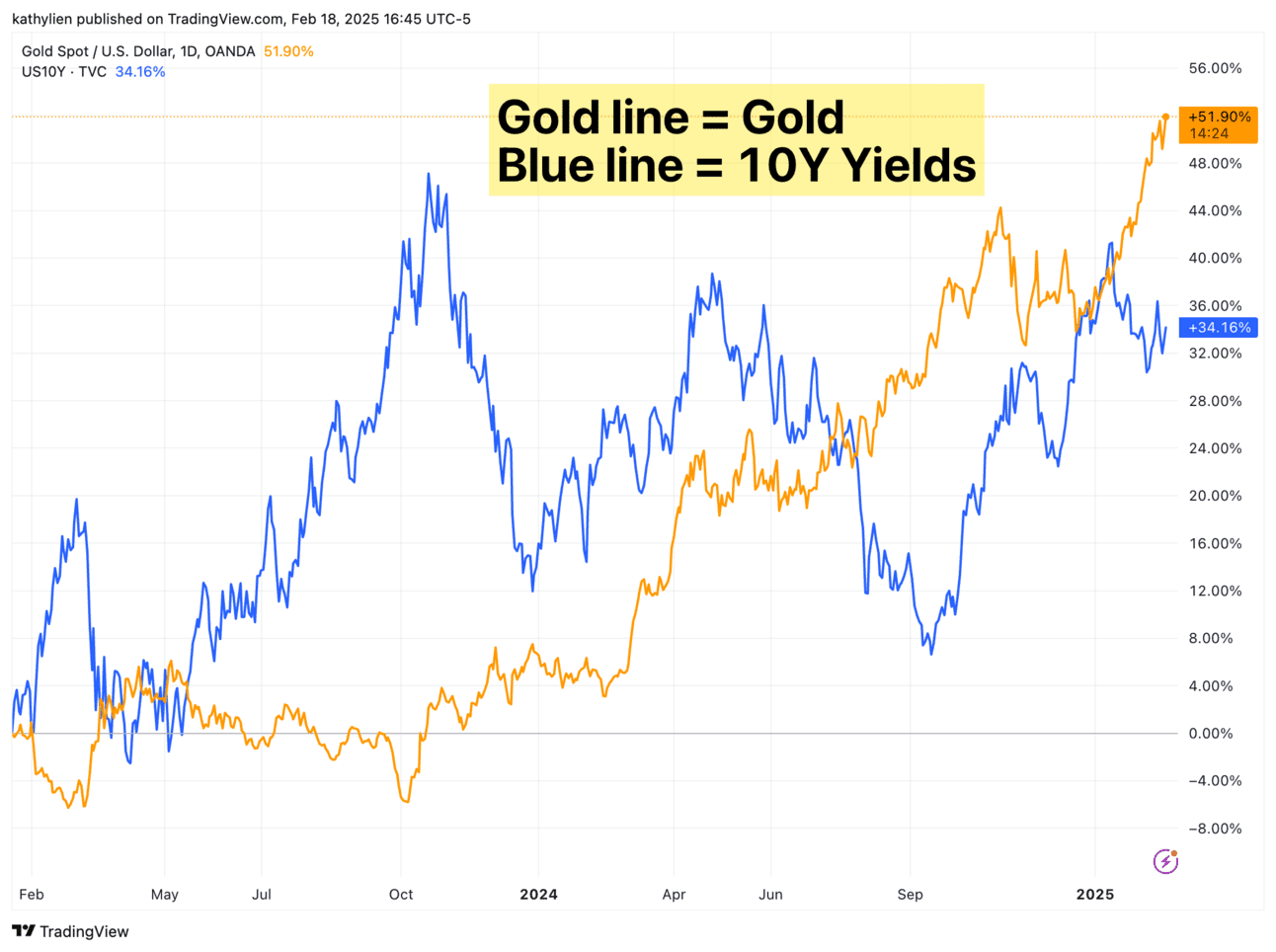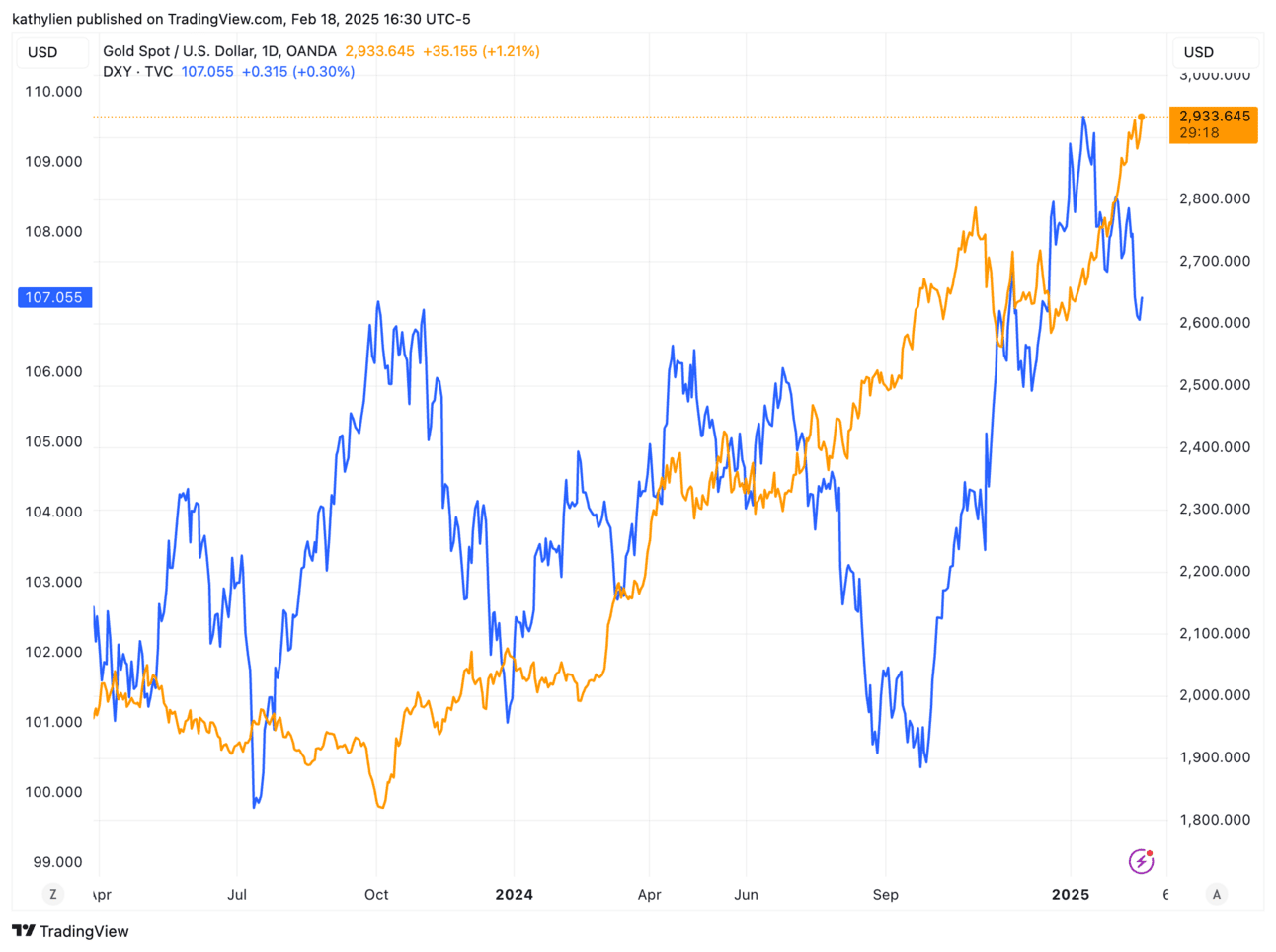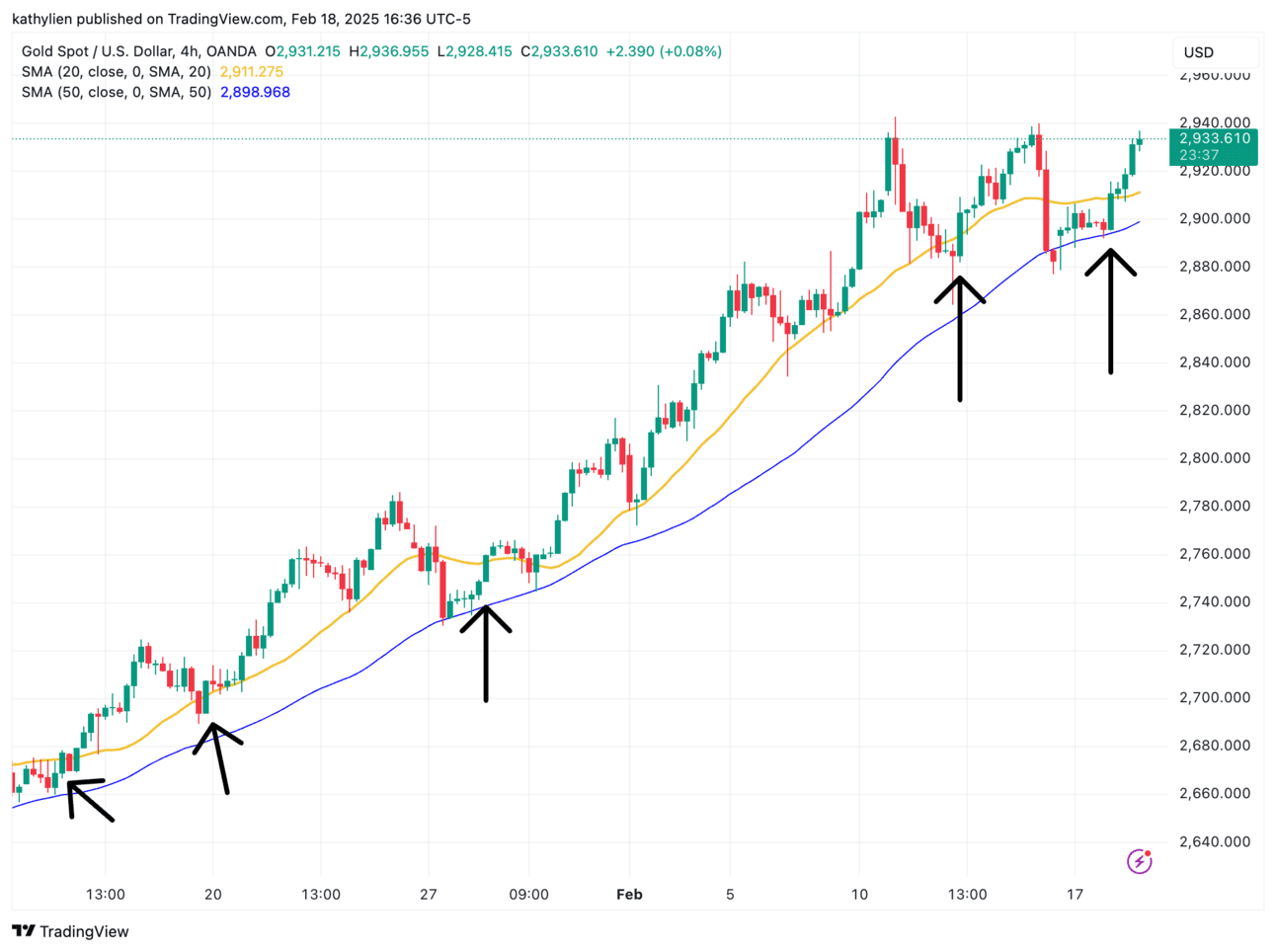If you want to trade gold successfully, you need to understand what moves its price and how to time your entries like a pro.
Gold is one of the most exciting assets to trade, but without the right strategy, it can also be one of the most frustrating. If you want to trade gold successfully, you need to understand what moves its price and how to time your entries like a pro. We’ve got three powerful tips that can give you an edge—watching Treasury yields, tracking the US dollar, and following the trend with moving averages. Master these, and you’ll have a solid foundation for making better trading decisions.
Tip #1: Watch Treasury Yields—Gold’s Inverse Relationship
If there’s one thing every gold trader needs to know, it’s that gold and US Treasury yields move in opposite directions. When Treasury yields rise, gold tends to fall, and when yields drop, gold often rallies. This relationship exists because of how interest rates impact the attractiveness of gold versus other investments.
Here’s a simple rule to remember:
- If US Treasury yields are down 1% or more—look for buying opportunities in gold.
- If US Treasury yields are up 1% or more—avoid buying gold.
Why does this work? Because rising yields make interest-bearing assets like bonds more attractive, pulling investors away from gold. But when yields drop, gold suddenly becomes a more appealing safe-haven asset, pushing its price higher. By keeping an eye on bond yields, you can avoid bad trades and take advantage of high-probability setups.
Tip #2: Pay Attention to the US Dollar
Since gold is priced in US dollars, the two usually move in opposite directions:
- When the US dollar strengthens, gold tends to weaken.
- When the US dollar weakens, gold usually rises.
This makes sense because a stronger dollar makes gold more expensive for foreign buyers, reducing demand. Conversely, when the dollar falls, gold becomes cheaper and more attractive globally, pushing its price higher.
However, there are exceptions. In times of economic uncertainty or geopolitical crises, both gold and the US dollar can rise together as investors seek safety. But in general, if you see a strong dollar rally, be cautious about buying gold unless there’s another major factor driving it higher.
Tip #3: Stick with the Trend Until It Bends
When gold prices are near record highs, one of the simplest yet most effective trading strategies is to trade with the trend—not against it. One of the best tools for spotting trends are moving averages.
A simple strategy for trading gold is using the 20-period and 50-period simple moving averages (SMA) on a 4-hour chart:
- If gold closes below the 20 SMA (gold line) and then reclaims or rises back above it —this signals trend continuation and could be a great place to buy.
- Place a stop just below the 50 SMA (blue line) for risk management.
Looking at past performance (while not a guarantee of future results), this approach has been incredibly effective. On a recent gold chart, this simple setup would have resulted in five winning trades out of five trend resumptions!
Gold trading isn’t about luck—it’s about understanding the forces that drive price movements. If you focus on these three key factors—Treasury yields, the U.S. dollar, and the trend—you’ll be in a much stronger position to make smart, profitable trades.
- Monitor bond yields to avoid bad trades.
- Track the U.S. dollar for clues on gold’s direction.
- Use moving averages to ride the trend with confidence.
The best traders don’t fight the market—they flow with it. Stick with the trend until it bends, and let these three tips guide you to better gold trades!
